To round out our discussion on Heavy Weight Fabrics, let’s take a look at Denim.
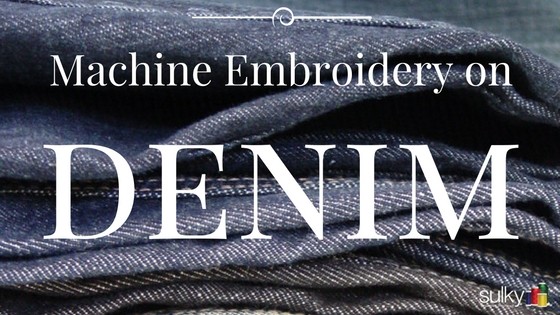
Denim Supplies:
Stabilizer: Sulky® Soft ’n Sheerâ„¢ – This is a viable stabilizer option, even though we generally suggest tear-aways for wovens and cut-aways for knits:
The general thought process when selecting a stabilizer for any project tends to be that a “heavy†fabric requires a “heavyâ€Â stabilizer. However, with few exceptions, the opposite holds true. Think about it. The main purpose of a stabilizer is to provide a solid “foundation†for the fabric to accept the intended embroidery, as well as enabling the fabric to be secured in an appropriate size hoop to allow for the necessary machine movement to stitch the design. Lighter weight fabrics will require a stabilizer to help reinforce their properties to accept any machine embroidery. However, heavier fabrics already provide a dense, solid foundation in accepting the “many required stitches†needed to produce a beautiful embroidered design. Therefore, in a case like this, the purpose of the stabilizer is simply to provide the “required†hooping. Hence the perfect union of Soft ’n Sheerâ„¢, the link between necessary hooping and heavier, dense fabric.
Some denims can also can have a surprising stretch to them, making Soft ‘n Sheer a better choice, too.
Who would have thought….. Right?
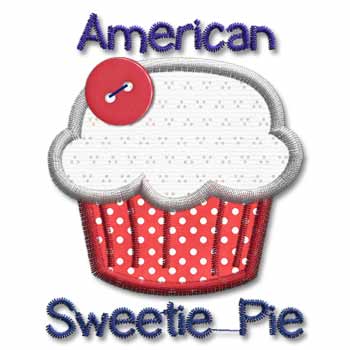 Denim sample design is a free download to all members of the Sulky Embroidery Club (and membership is free – just sign up!): #762 American Sweetie Pie
Denim sample design is a free download to all members of the Sulky Embroidery Club (and membership is free – just sign up!): #762 American Sweetie Pie
Needle: Topstitch 100/16
Thread:Â Sulky 40 wt. Rayon thread
Step 1
Hoop Soft ’n Sheer™ (in white or black) in an appropriate size hoop and pull it as “tight as a drum†as possible.
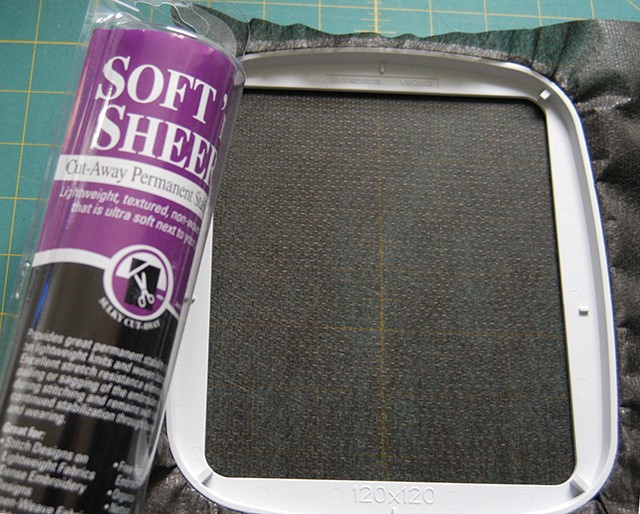
Step 2
Secure the denim to the stabilizer in one or more of the various methods mentioned in this post. This finished sample below features machine basting around the inside of the hoop (shown from the wrong side).
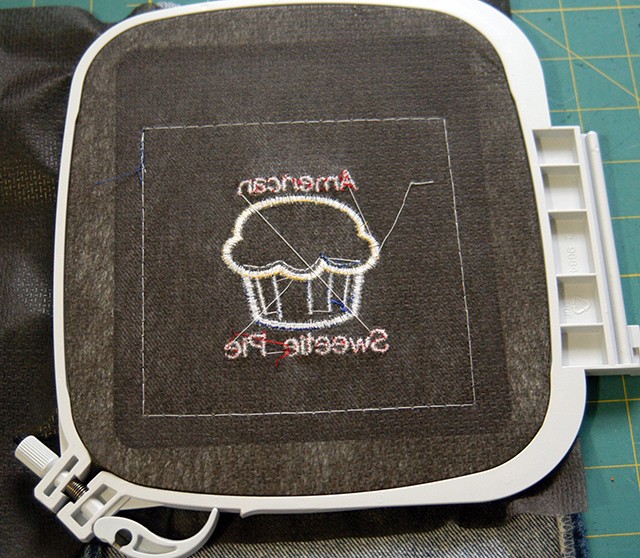
If an embroidery machine offers a “fix-baste†as an option, there is often a choice of “fixing†within the hoop frame or basting around the actual design area and/or both. I felt that a heavier fabric might be better secured if more of the fabric was tacked down:  So, basting within the hoop area was chosen. This is not to say that the additional securing around the design is a bad idea but for a small applique design, it was an unnecessary step.
Step 3
Embroider the design following the stitching sequence outlined in the color sequence sheet that comes with the design.
Step 4
Once the design has been stitched, first remove the basting box which is usually easier to do by cutting through the bobbin threads while the design is still hooped.
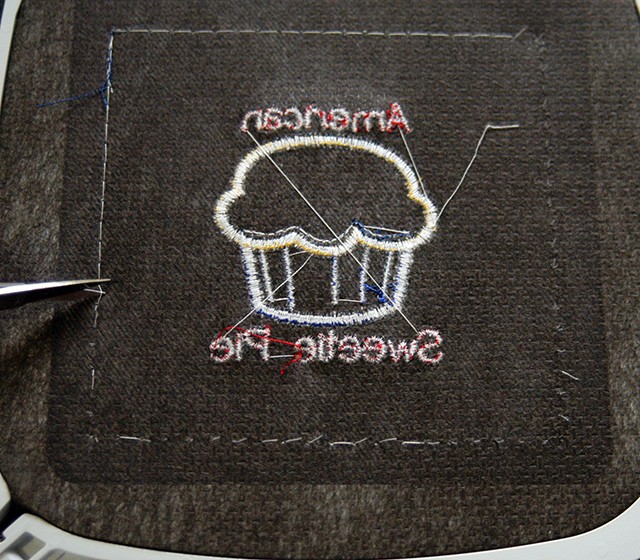
Step 5
Remove as much Soft ’n Sheer™ as desired. Excess can simply be cut away from the outer edges.
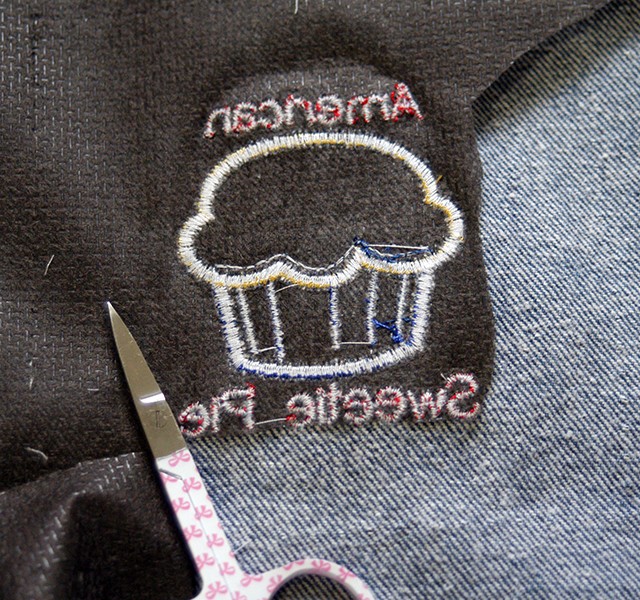
Or, if the project requires a nicer presentation of the “wrong-sideâ€, Soft ’n Sheerâ„¢ is very easy to “slice†from the outer extremities of any design using a small, sharp scissors.
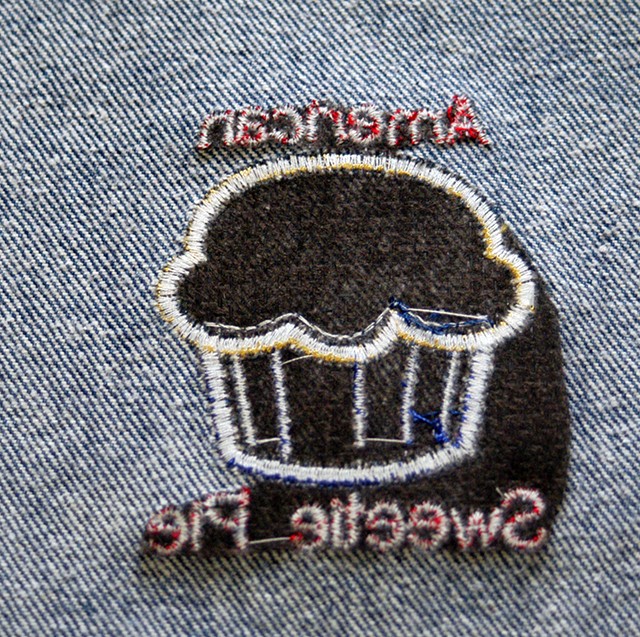
Step 6
Finished embroidery was pressed face down into a thick terry towel.
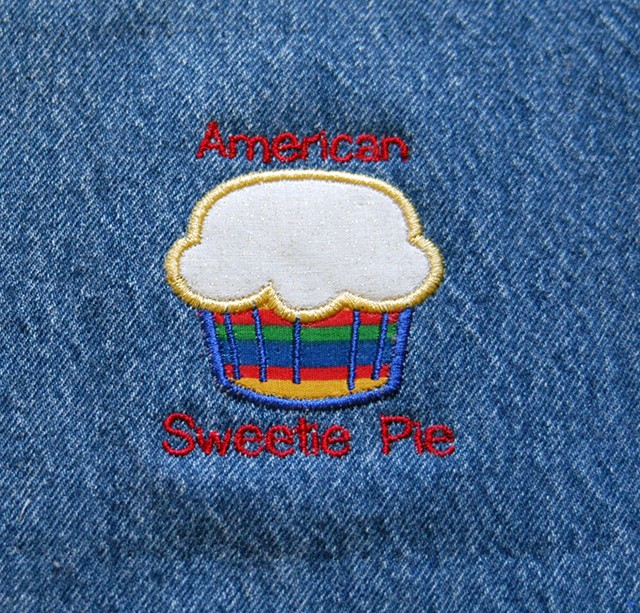
Please keep in mind that machine embroidery offers many options or different approaches to the same goal. It is really up to you to decide what works best for you! Ask the same “how to†question of five different machine embroidery “experts†and I promise that you will receive at least three different answers.  There are basic guidelines, but every fabric and design combination can present variables.
The key to success in machine embroidery is using quality products. This may start with the purchased fabric, but it cannot end there. It must carry through to the stabilizer, thread, needle and even the design itself. Each of these components are equally dependent upon the other in producing a “quality end productâ€.
If only one bit of knowledge is gained from this blog series, I sincerely hope that it is the importance of using “quality†products.  Sulky = Quality.


